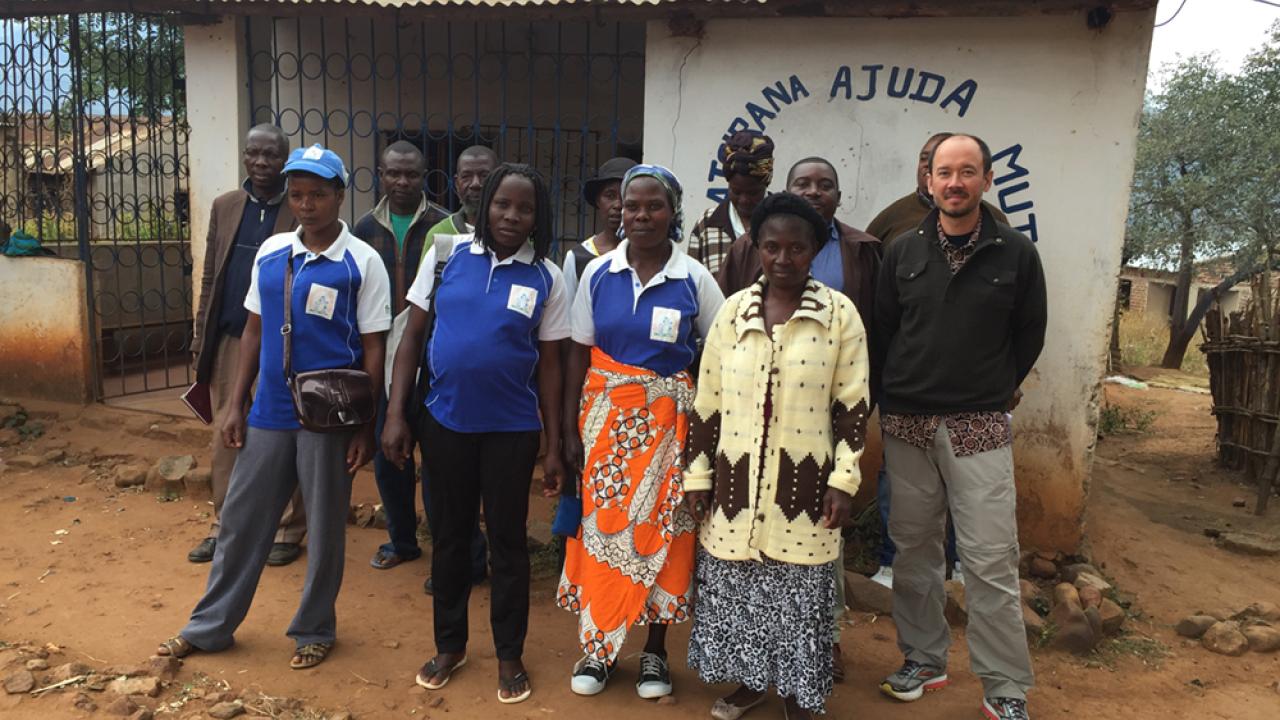
The Economics of Migration, Remittances and International Development
Dean Yang visited UC Davis in May, 2019 to present new research on information, social networks and integration among new U.S. immigrants from the Philippines. Yang’s research bridges two broad areas in the subject of migration from poor to rich countries. One is the economic impact of remittances, the form of money migrants send back to their home countries. The other is about how people decide to migrate and how it affects development in migrants’ home countries.
In addition to his work on migration, Yang is conducting an AMA Innovation Lab evaluation in Mozambique on the President’s Emergency Plan for AIDS Relief (PEPFAR), initiated by the U.S. government in 2003. In Mozambique, PEPFAR is supporting a program that aims to reduce the socioeconomic impact of HIV/AIDS on orphans and vulnerable children and their caregivers. Yang is a professor of economics at the University of Michigan.
AMA: How did you identify that remittances were a critical part of understanding migration?
Yang: I’m not the only one who has highlighted remittances as an important resource flow for developing countries. It’s pretty apparent in the data. The largest type of international flow is foreign direct investment, which is typically $600-700 billion a year to developing countries. Remittances are not far behind at about $500 billion.
For a comparison, official development assistance through foreign aid amounts to about $130 billion a year. That gets a huge amount of attention from a policy and research standpoint but it’s much smaller compared to remittances. That’s been changing for the last 10-15 years. I’ve been part of the movement to bring remittances more to center stage from a development standpoint.
From a personal standpoint, I’m an immigrant from the Philippines. I came to the U.S. for college. International migrant labor and the remittances that migrants send home are very, very big aspects of the society and the economy.
My dad worked in Hong Kong in business for five years in the 1980s when the economy wasn’t doing well in the Philippines, so my family was directly involved in international labor migration and in international remittances. I think that led to my personal interest in the topic. I started doing work on that in chapters of my Ph.D. dissertation.
AMA: How do remittances affect development?
Yang: That’s one of the big questions that motivates me. How does international migration from poor countries to rich countries affect development in home countries? Is international migration a contributor to development or is it a drag? Could it actually harm the development of poor areas?
There’s a big debate in this area where brain drain is a big topic. The term “brain drain” gets thrown about. People talk about the loss of skilled individuals in the medical field and all sorts of high skilled areas, highly educated people leaving their home countries is widely thought to be a bad thing by a lot of outside observers.
On the other hand I think from an empirical standpoint it’s much less black and white than that. Even though these individuals are leaving, they’re sending back remittances, which are having a lot of development benefits. It’s also not clear that when skilled people leave necessarily means there’s less skill or expertise left behind in their home country, because societies are not stagnant.
It’s widely known that Filipino nurses have been going around the world. We see them in California, a big destination. Everywhere you go in the industrialized world you see Filipino nurses and this has not led to there being fewer nurses in the Philippines. There’s actually a glut of nurses in the Philippines because everyone wants to be a nurse. Nursing colleges are springing up all over.
In other areas where maybe there isn’t a robust enough environment to allow private educational institutions to be established and grow and thrive, maybe because of higher regulation or greater corruption, or most of the training is happening in government institutions or public universities, maybe there isn’t this same ability for a society to generate more training in the skills of the people that are leaving. So whether skilled migration leads to “brain drain” may depend on the context.
AMA: How does international development policy affect migration patterns?
Yang: One thing that needs to be emphasized more is that immigration policy is development policy. Immigration policy has development impacts. Immigration policy affects whether people can migrate in response to natural disasters and other negative shocks in home areas. I have a paper forthcoming with Parag Mahajan that shows hurricanes caused a clear and substantial amount of new immigration to the U.S. over a 25-year period.
One of the key points in the paper is that the size of the increase varies depending on whether those countries already have past migrants already present in the U.S. to ease the way. The response is pretty substantial. A lot of the migration is via legal channels of entry. This is not people going across the U.S. border from Mexico. This is people being sponsored by their relatives. It’s quite visible in U.S. immigration data and that hasn’t been documented before.
Migration itself is a response to negative circumstances in a home area. Simply being able to escape circumstances like negative shocks, hurricanes, natural disasters, political disasters, is an important way that people can improve their lives.
Media contact:
Alex Russell, (530) 752-4798, parussell@ucdavis.edu
